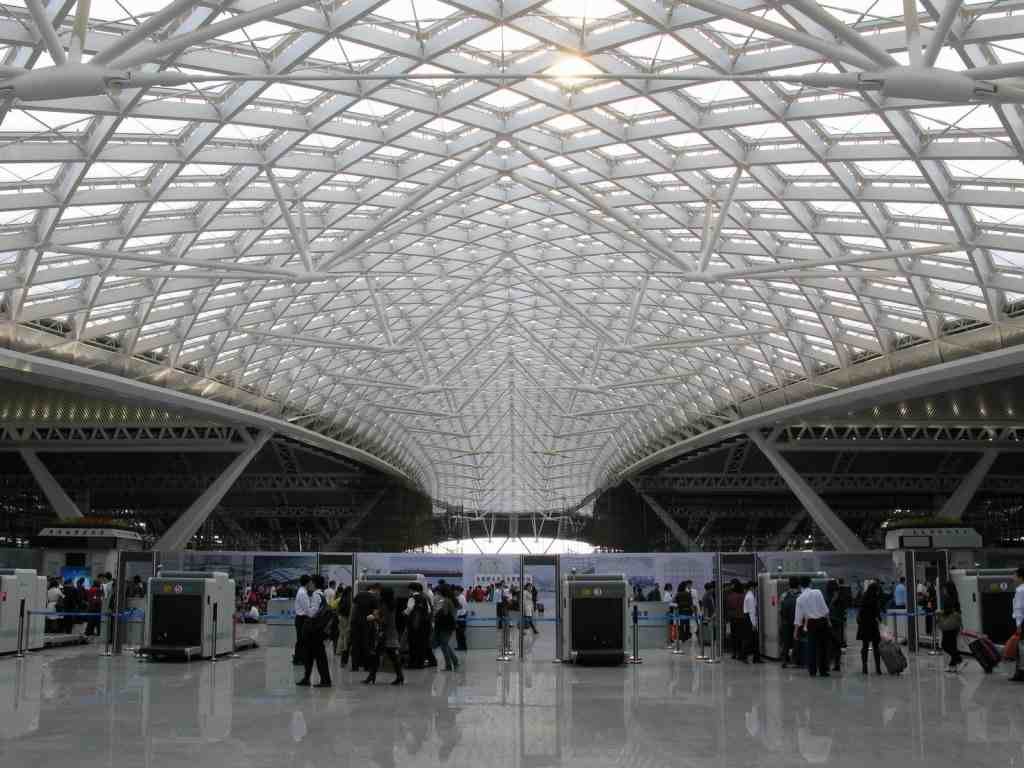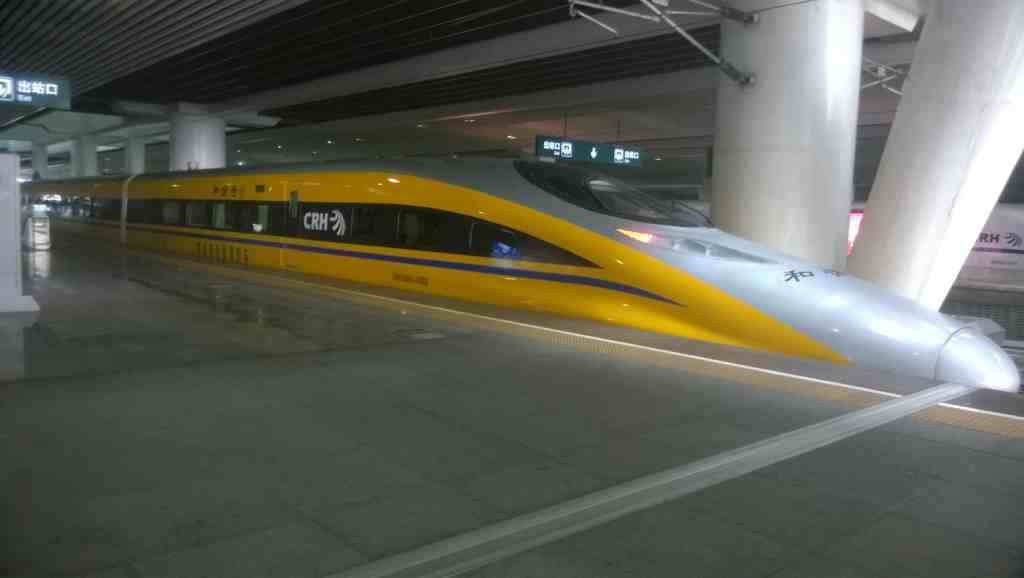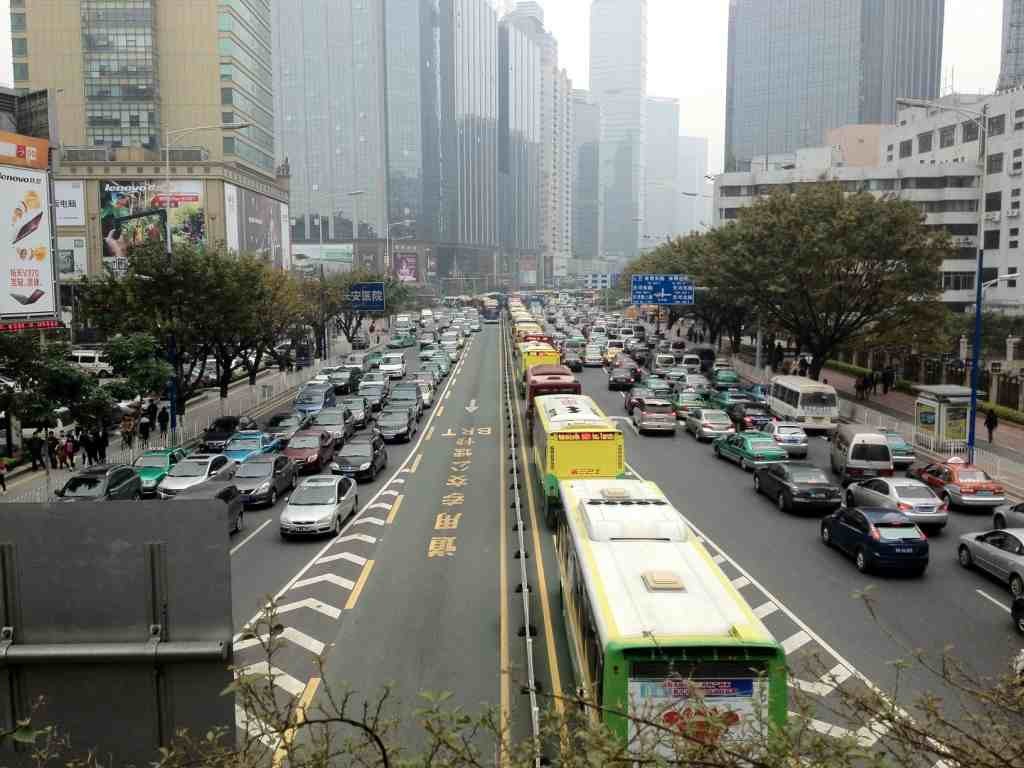
Guangzhou. The city of Flowers.
The third largest city of China is a city where the old is trying to keep up with the new. Guangzhou has been the centre of trade and economy for over 2,000 years. Today, it is known as the capital of Southern China. Guangzhou grows rapidly everyday, it’s skyline ever changing, while the people of the city remain rooted in their immensely rich culture.
1. History of Guangzhou
Guangzhou’s recorded history begins with the name Panyu, when the region was annexed by the Qin Dynasty. The city expanded when the Nanyue Kingdom made the city its capital in 206 BCE. The city rose as an important port and became one of the birthplaces of China’s maritime Silk Road. By the 10th century CE, Indian and Arab merchants had established a presence in the city. The Portuguese were the first Europeans to trade in Guangzhou (buying the region’s silk and porcelain). The Portuguese monopoly in trade was broken by the British in the 17th century. The French and Dutch were also involved in trade by the 18th century.
The First Opium war broke out in 1839. Subsequently, the city fell to the hands of the French and the British.
The revolution for independence broke out in 1911, under the guidance of Dr. Sun Yat-sen. The People’s Republic of China was proclaimed in January, 1912. The People’s Liberation Army took Guangzhou in October, 1949. Since then, Guangzhou has expanded rapidly and is the centre for all economic activity on the Pearl River delta.
2. Night Life of Guangzhou
Most of Guangzhou’s nightlife is scattered all over the city. The three main bar clusters in the city can be found in Huanshi Dong Lu, Yanjiang Xilu and Bai’E Tan.
The bars of Huanshi Dong Lu (near Taojin subway station) are frequented by foreigners. Yanjiang Xilu, on the north bank of the Pearl River has upmarket bars and clubs. Bai’E Tan, in the Fangcun district, is along the riverside.
Yue Ju (Cantonese opera) is a style of opera popular in the southern provinces of China where Cantonese is prevalent. The Guangzhou Opera House with the Opera Hall and the Experimental Theater play host to a large number of traditional and modern art performances.
You can also have fun at a Karaoke bar or take an evening cruise on the Pearl River.
The listings of the events in the city can be found here.
3. Safety in Guangzhou
Guangzhou is a safe city, but tourists often fall victims to pickpocketing and purse snatchings. Look out for obvious scams, keep your valuables in the hotel safe and always keep your bag in your control.
The local water and unpasteurised dairy products should be avoided at all times. Drink bottled water and carry necessary medicines with you.
Avoid walking alone at night (especially around the train stations) and don’t pick any fights because the police might not actively help you out.
4. Living Expenses in Guangzhou
For a city its size, Guangzhou’s cost of living is decent. Even though the city is still more costly than most Chinese cities.
A studio apartment in the city centre can cost as much as 6,000¥ (USD 930). A similar apartment outside the city centre or a locality not close to a metro station can be as high as 3,000¥ (USD 460). The costs average at 4,800¥ (USD 740) and 2,500¥ respectively. The cost of apartments will be higher if the locality is near a metro station or other amenities.
The cost of buying a square metre of land in the city centre can be as high as 60,000¥. The cost of buying a square metre of land outside of the city centre costs as much as 30,000¥. The costs average at 45,000¥ and 22,000¥ respectively.
Budget hotels have tariffs up to 150¥. Luxury hotels (Mandarin Oriental, Guangzhou Marriott, The Sheraton..) can have tariffs as high as 1,500¥ per night.
5. Cuisines of Guangzhou
Guangzhou is home to the world famous Yue Cai (the Cantonese cuisine). Often confused as the “Chinese cuisine”, the Cantonese cuisine is one of the Eight Traditional culinary cuisines of China.
PanXi restaurant in the Liwan district serve over 1,000 varieties of Dim Sums; Nanxin Milk Store on Jia Xi Liu serves the authentic Shuang Pi Nai; Jidi Zhou can be found in the Wujhan Ji restaurant; the traditional “morning tea”, Yum Cha, can be found in the Wang Laoji Herbal Tea House. Kao Ru Zhu, Long Hu Dou, Rice Rolls, Tang Bu Shuai and the Baiqie chicken are integral parts of the foods of the city.
You can also explore the city’s Foodstreets (the most famous one being the Shangxiajiu Pedestrian Street) or have the delicious sea food in the South Sea Fishing Village. The Village also excels at the Cantonese Cuisine. Shamian Island is also a great destination to try out the food.
6. Statistics of Guangzhou
Guangzhou has been designated by the government as a “sub-provincial city”. It is the third largest city in China. The area of the city is 7,434 sq. km. The urban and metropolitan areas extend to upto 3,843 sq. km. The population of the administrative centre of the city is 13 million, with a density of 1,800 per sq. km. Most of Guangzhou’s population is Han Chinese. The most prominent religion is Buddhism, followed by Taoism, Christianity, Islam and Judaism.
7. Public Transport in Guangzhou
Guangzhou is connected with the rest of the world through the Guangzhou Baiyun International Airport.
 The public transport of the city is highly extensive. The subway (the fares range from 2¥-14¥) caters to most of the transport requirements. For hard to reach places there are the taxis (while using taxis, write the name of your destination in Chinese and show it to the driver if you don’t know how to speak the language). Buses, ferries and bicycles are other means. Bicycles are not ideal, though, because of the huge crowds of people, the narrow streets and the rash traffic.
The public transport of the city is highly extensive. The subway (the fares range from 2¥-14¥) caters to most of the transport requirements. For hard to reach places there are the taxis (while using taxis, write the name of your destination in Chinese and show it to the driver if you don’t know how to speak the language). Buses, ferries and bicycles are other means. Bicycles are not ideal, though, because of the huge crowds of people, the narrow streets and the rash traffic.
 The Yang Cheng Tong card is Guangzhou’s smart card to travel using any public transport. The card can be purchased in any 7-Eleven store, T&T laundry or the Metro ticket centres. The card can also be used to pay in any Circle K or 7-Eleven store.
The Yang Cheng Tong card is Guangzhou’s smart card to travel using any public transport. The card can be purchased in any 7-Eleven store, T&T laundry or the Metro ticket centres. The card can also be used to pay in any Circle K or 7-Eleven store.
Guangzhou experiences a humid subtropical climate. The summers are long, wet, humid and hot. Winters are dry and mild. The city’s monsoon lasts from April till September. The annual rainfall is around 1,700 mm. Guangzhou saw snowfall in January, 2016 after a hundred years.
Summer: June to September. Average low: 25 degrees C. Average high: 32 degrees C.
Autumn: October to November. Average low: 17 degrees C. Average high: 26 degrees C.
Winter: December to February. Average low: 10. Average high: 19 degrees C.
Spring: March to May. Average low: 19 degrees C. Average high: 25 degrees C.
9. Culture of Guangzhou
The culture of Guangzhou is a mix of all that is Cantonese. The Cantonese cuisine, the Opera, the people and the music of Guangdong.
The city has 14 public libraries, 44 artistic sites and 300 cinemas showing sites. The symbolic sites include the Xinghai Odeum, Guangdong Art Gallery, Sun Yat Sen Memorial Hall, Guangzhou Arts Museum, and Hong Xiannu Art Center. Guangzhou’s culture and history are on display in the Museum of Nanyue King and Guangzhou Museum.
The Opera House holds regular cultural and art performances.
10. Places to Visit in Guangzhou
Things to do in Guangzhou: See the Eight Sights of Guangzhou; Climb up the Canton Tower; Visit the Yuexiu Park, Temple of the Six Banyan Trees, Sacred Heart Cathedral, Huaisheng Mosque, Guangxiao Temple, Chen Clan Academy, Shamian Island. Pazhou; Take the Pearl River cruise; Shop at the CITIC Plaza and the Tianhe district; Stroll along the roads of the Old City, go to the Opera; Have the authentic Cantonese cuisine.
Things to do for Kids in Guangzhou: The Chimelong Paradise (amusement park), the Chimelong Safari Park and the Chimelong International Circus are some of the best places for kids in Guangzhou. The Yuexiu Park, Guangzhou Zoo and Botanical Gardens are also good choices.
Museums and Galleries: Museum of the Mausoleum of the Nanyue King, Guangdong Provincial Museum, Zhenai Museum and Guangdong Museum of Revolutionary History are some of the well-known museums in Guangzhou.
Places Nearby: The cities of Hong Kong, Macau, Foshan and Zhuhai are not even a day’s trip from Guangzhou. The islands nearby the city like Wanshan Island, Hailing Island, Fangji Island and Donghai Island are close enough for a quick getaway.
Offbeat Places: Sanmen Islands in Huizhou City is not yet touched by tourism. Xiachuan Island is a beautiful fishing village. Shangchuan Island has some amazing beaches.
Author’s Conclusion: As a tourist destination, Guangzhou is one of its kind. The city has swallowed all the foreign cultural influences over the years and turned it into a distinct signature of its own. With the gobsmackingly delicious food, the rapid urbanisation, the quiet and serene Cantonese streets and lifestyle, you should not miss out on Guangzhou.
| Country | China |
| City | Guangzhou |
| Area | 7,434 sq.km |
| Population | 13,080,500 as in 2014 |
| Demonym | Cantonese |
| Languages | Cantonese |
| Currency | Renminbi (RMB) (1 USD = 6.52¥ as of 28th January, 2016) |
| Time Zone | China Standard Time (UTC +8) |
| Driving | Left Hand Drive, Right Hand Traffic |
| Helpline | Police-110, Fire-119, Municipal First-Aid Centre-120 |
Don’t forget to PROMOTE your Incredible Guangzhou using the Share buttons.

Fabulous reasons to go to Guangzhou…
Coincidentally, I blogged about the number of countries that I have traveled to until now and some of the cities in those countries which I haven’t visited yet. This one features on my wishlist 🙂 My travel blog is called Travel with Archie. Do hop over sometime 🙂
Cheers, Archana
Comments are closed.